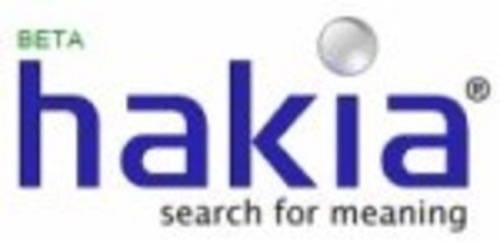In 2008 we saw the Semantic Web gain traction, giving us plenty of choice when selecting the 10 best Semantic Web products of 2008.

This is the first in a series of posts we’ll publish over December, listing our choices for the top web products of the year. Then at the end of December, we’ll post a Top 100 list – which we’ll be promoting over 2009 and opening up at some point for public voting. Without further ado, let’s jump into the top 10 Semantic Web products of 2008.
Earlier this month we posted an update to 10 Semantic Web applications that we have been tracking for a year now. Some of those make this list, as well as some from our follow-up post 10 More Semantic Apps to Watch. We also have a couple of other products in this list, which for one reason or another didn’t get mentioned in our watch-lists.
You may disagree with our selections, so do tell us in the comments what you think.
Note: the products listed below are in no particular order
Yahoo! SearchMonkey
In May this year Yahoo! launched an open developer platform for search called SearchMonkey. Yahoo hasn’t had the happiest of years, but its willingness to innovate in search is to be commended. As we reported at the Web 2.0 Expo in April, SearchMonkey is a component of a major overhaul at Yahoo! across all of its properties to “rewire” for the social graph and data portability. SearchMonkey allows developers to build applications on top of Yahoo! search, including allowing site owners to share structured data with Yahoo!, using semantic markup (microformats, RDF), standardized XML feeds, APIs (OpenSearch or other web services), and page extraction.

We think this is the best use of Semantic Web by an Internet bigco this year. So for that reason SearchMonkey makes our top 10 list. Related: The Story of SearchMonkey.
Powerset (acquired by Microsoft in ’08)
Powerset (see our initial coverage here and here) is a natural language search engine. It’s fair to say that Powerset has had a great 2008, having been acquired by Microsoft in July this year.

At the time of the acquisition, Powerset said that it needed a bigger partner to expand its product beyond its current state of only searching Wikipedia – something we had speculated about when the rumors of the acquisition first appeared. In its own statement, Microsoft stressed how useful Powerset’s technology will be for improving Microsoft’s own search products and to “take Search to the next level.” In our analysis of the deal, we noted that it was a “bold play requiring exact execution” by Microsoft.
Open Calais (Thomson Reuters)
At the end of 2007, ClearForest had been recently acquired by Reuters and at that point it had a Web Service and a Firefox extension. What a change a year brings! ClearForest went on to release Calais, a toolkit of products that enable users to incorporate semantic functionality within their blog, content management system, website or application.

Since launching the Open Calais API early this year, over 6,000 developers have registered with it and the service is doing more than 1 million transactions a day. Version 3.0 was released earlier this month and version 4 is expected by January 09.
Dapper MashupAds
In November we wrote about the recent improvement in Dapper MashupAds, a product we first spotted over a year ago. The idea is that publishers can tell Dapper: this is the place on my web page where the title of a movie will appear, now serve up a banner ad that’s related to whatever movie this page happens to be about. That could be movies, books, travel destinations – anything. We remarked that the UI for this has grown much more sophisticated in the past year.

The company believes that its new ad network will provide monetary incentive for publishers to have their websites marked up semantically. We think this has plenty of promise, so it makes our year-end list.
Hakia
Hakia is a search engine focusing on natural
language processing methods to try and deliver ‘meaningful’ search results. Hakia attempts to
analyze the concept of a search query, in particular by doing sentence
analysis. Over the past year Hakia has been busy extending its reach – licensing its proprietary OntoSem technology to other companies in March and announcing a Semantic API in June. It was also one of the first companies to utilize Yahoo! BOSS, by integrating their semantic parsing with the Yahoo! search index.

We think Hakia has made good progress getting its technology into the hands of third parties and making use of Yahoo’s broader index, so for that reason it’s among our top 10 for the year.
TripIt
Tripit is an app that manages your travel planning. With TripIt, you forward incoming bookings to [email protected] and the system manages the rest.

Over the past year TripIt has continued to iterate on its feature set – introducing LinkedIn integration, better mobile functionality, more social networking features, and other goodies. In short, it’s user experience continues to rock!
BooRah
BooRah is a restaurant review site that we first reviewed earlier this year and has come on in leaps and bounds over 2008. BooRah uses semantic analysis and natural language processing to aggregate reviews from food blogs. Because of this, BooRah can recognize praise and criticism in these reviews and then rates restaurants accordingly. BooRah also gathers reviews from Citysearch, Tripadvisor and other large review sites.

BooRah also announced last month the availability of an API that will allow other web sites and businesses to offer online reviews and ratings from BooRah to their customers. The API will surface most of BooRah’s data about a given restaurant, including ratings, menus, discounts, and coupons.
BlueOrganizer (AdaptiveBlue)
Disclosure: AdaptiveBlue’s founder Alex Iskold is a feature writer at RWW.
AdaptiveBlue are makers of the Firefox plugin, BlueOrganizer. As we wrote in January this year, the basic idea behind BlueOrganizer is that it gives you added information about webpages you visit and offers useful links based on the subject matter.

Over the past year the company has been working on a new product, called Glue. Launched last month, Glue is a more social networking oriented version of BlueOrganizer – it connects you to your friends based around things like books, music, movies, stars, artists, stocks, wine, restaurants, and more. We think the company has diversified smartly in 2008, by integrating social networking and mobile functionality into its products.
Zemanta
Zemanta is a blogging tool which harnesses semantic technology to add relevant content to your posts. While it didn’t make either of our ‘Semantic Apps to Watch’ lists in November, a number of commenters pointed it out as something they use. In September we covered a major upgrade to Zemanta’s service, allowing users to specify the sources they want to see in the suggestions list that Zemanta provides. Users can now incorporate their own social networks, RSS feeds, and photos into their blog posts. As we noted, this makes Zemanta a lot more appealing to established bloggers who are in less need of suggestions and more in need of automation.

Zemanta’s API is also being used by startups, including semantic bookmarking service Faviki – which we mentioned in our second Watch-list. So all up, we think Zemanta has done enough this year to be included in our top 10 list.
UpTake
Semantic search startup UpTake (formerly Kango) aims to make the process of booking travel online easier. In our review in May, we explained that UpTake is a vertical search engine that has assembled what it says is the largest database of US hotels and activities – over 400,000 of them – from more than 1,000 different travel sites. Using a top-down approach, UpTake looks at its database of over 20 million reviews, opinions, and descriptions of hotels and activities in the US and semantically extracts information about those destinations.

And now please let us know in the comments what you think of our selections. Do you think we’ve picked the best 10 Semantic Web products of the year?










